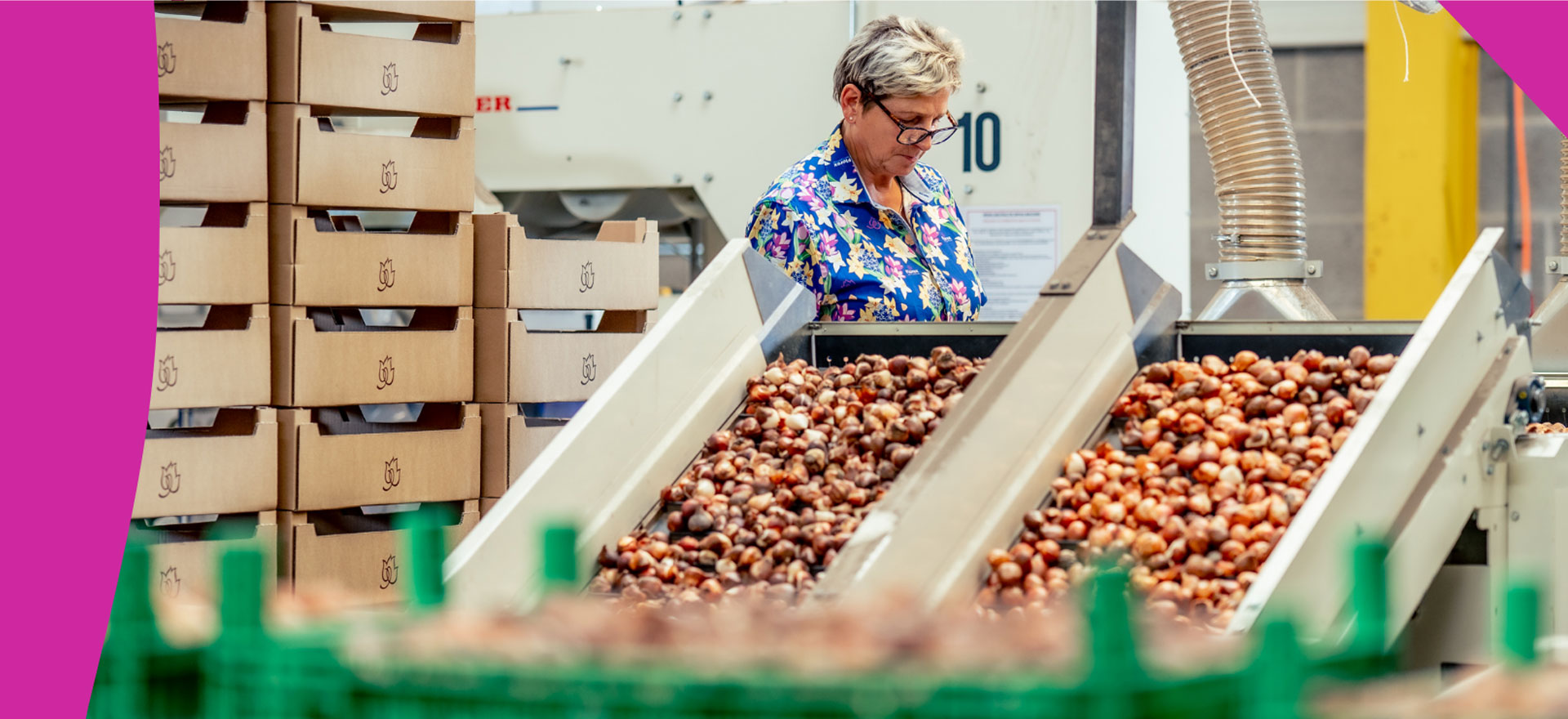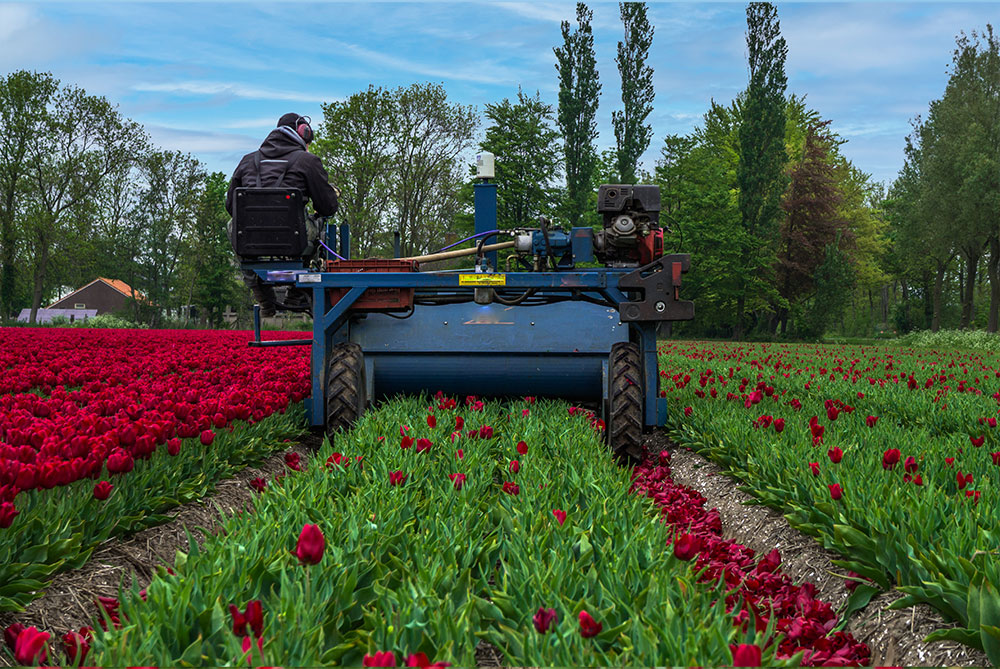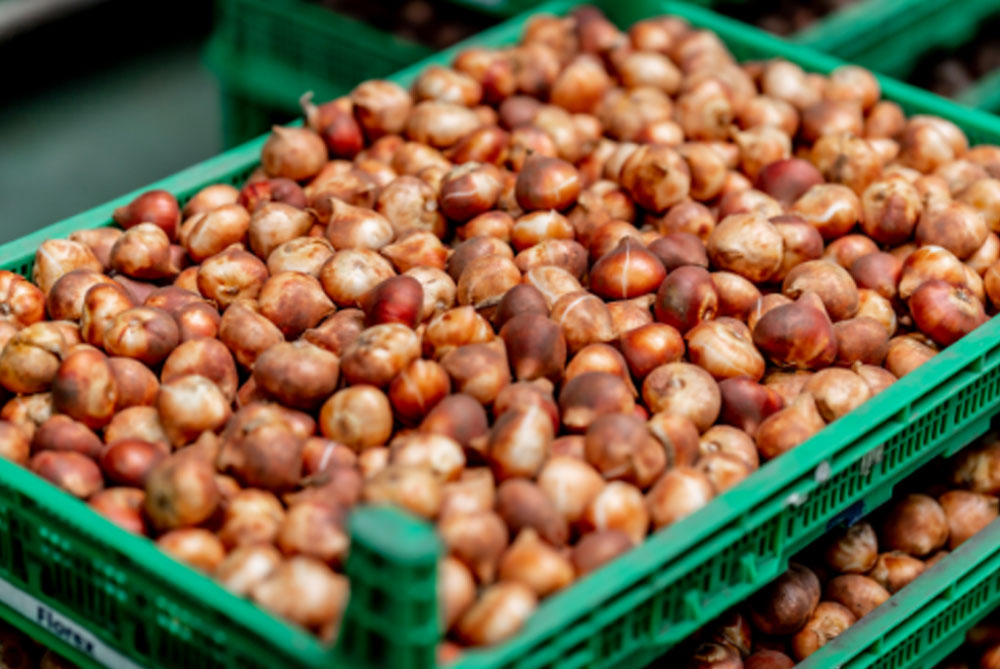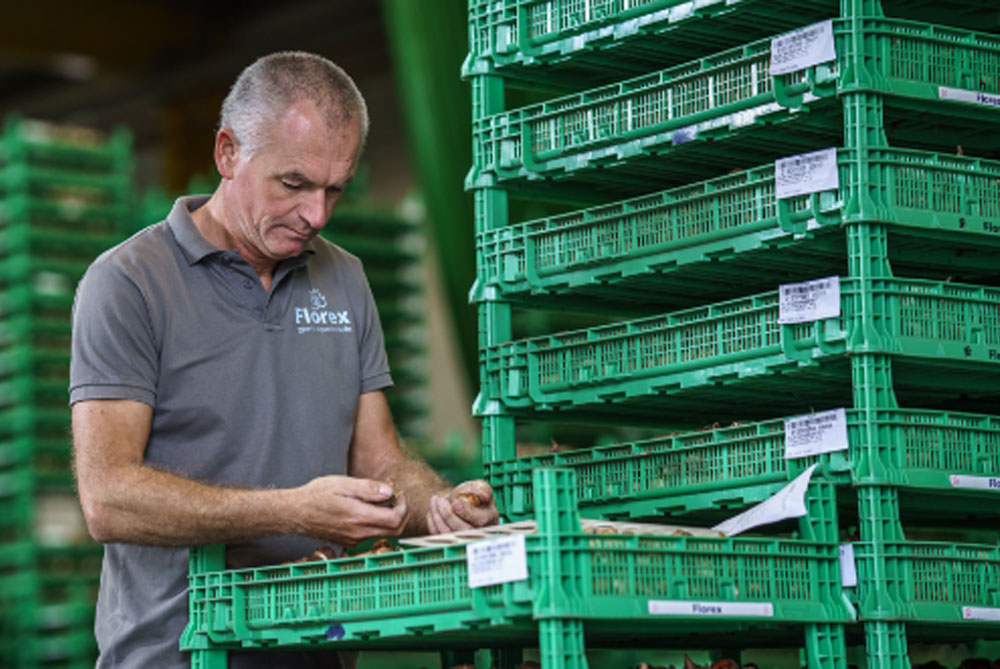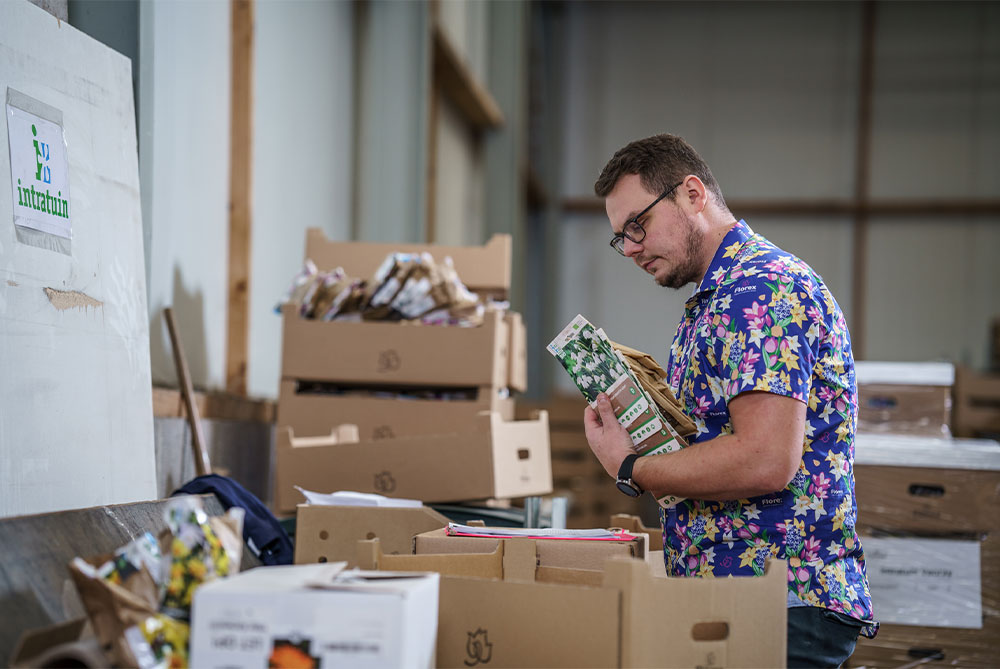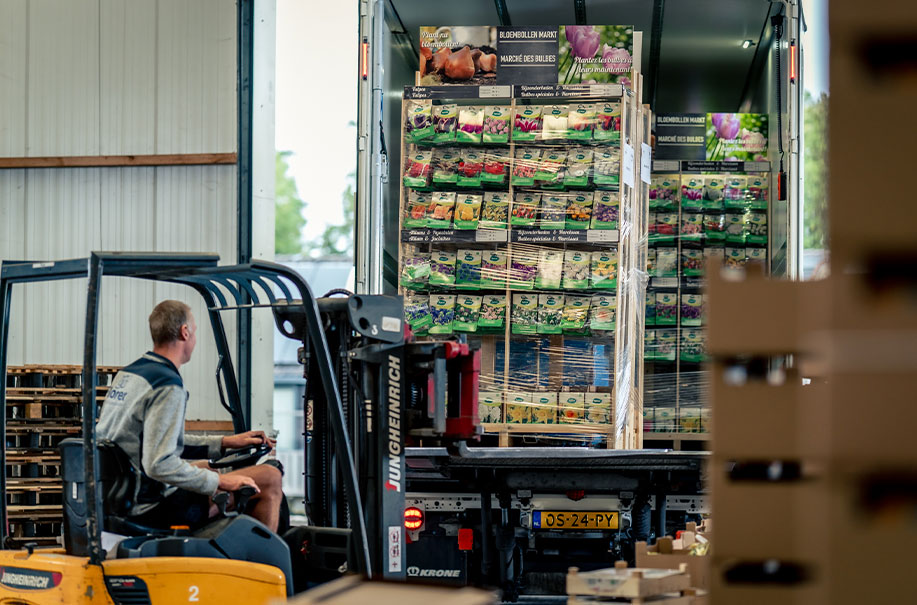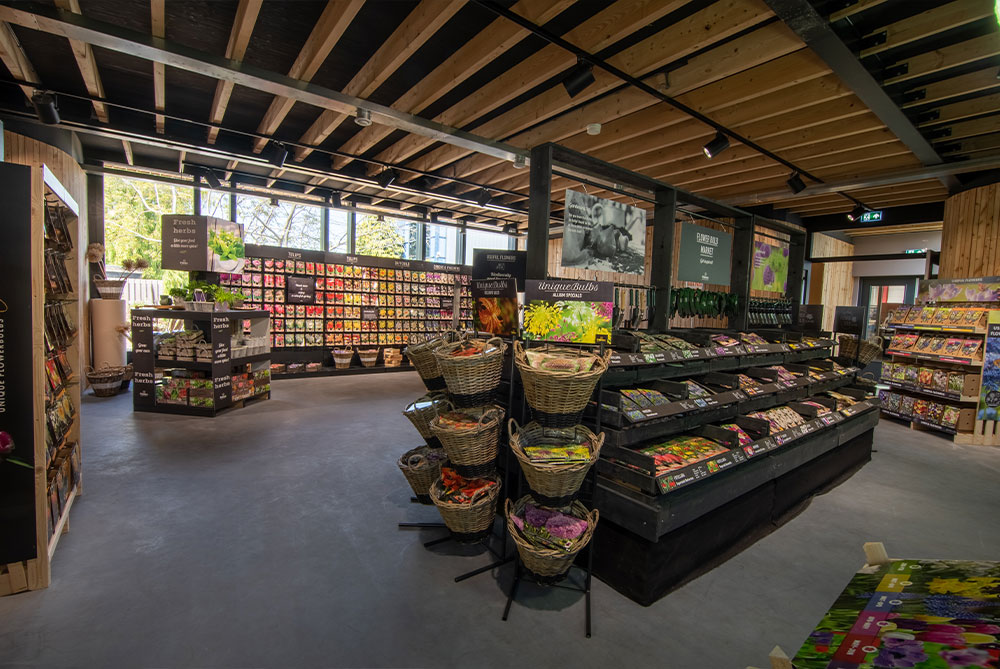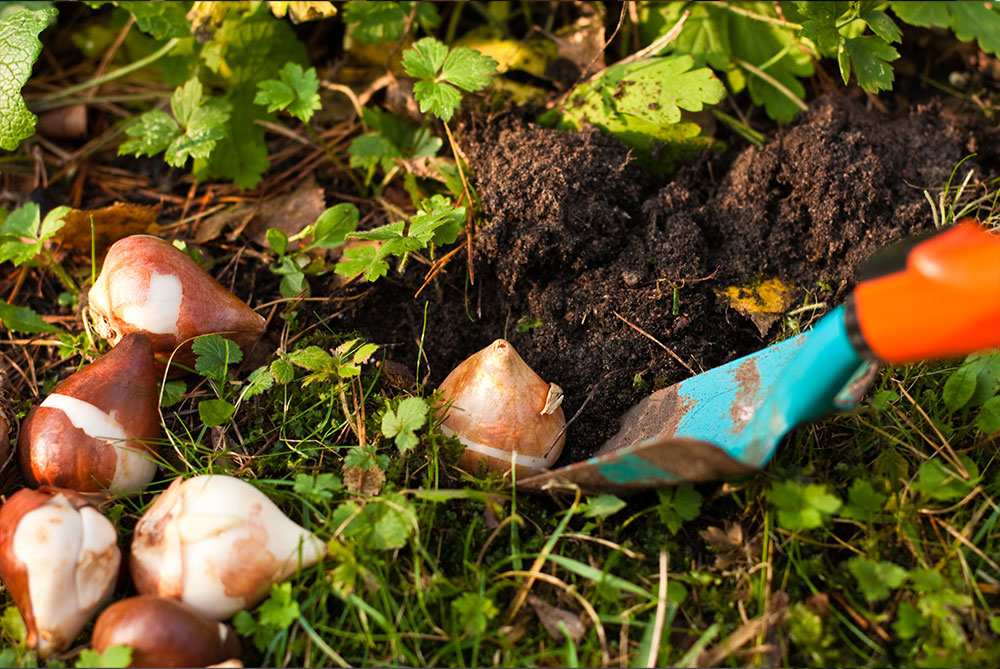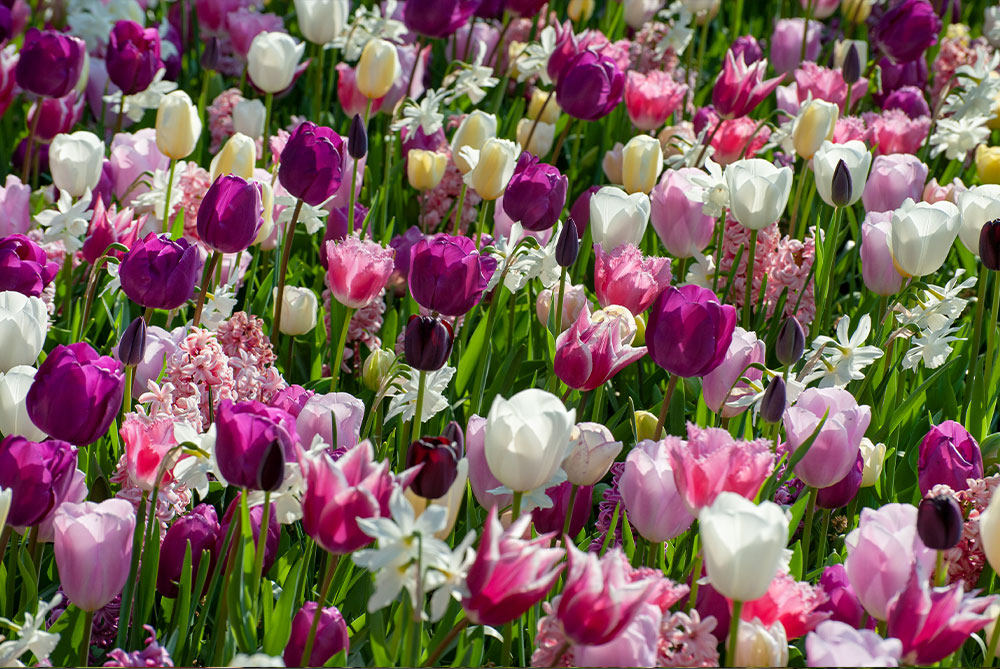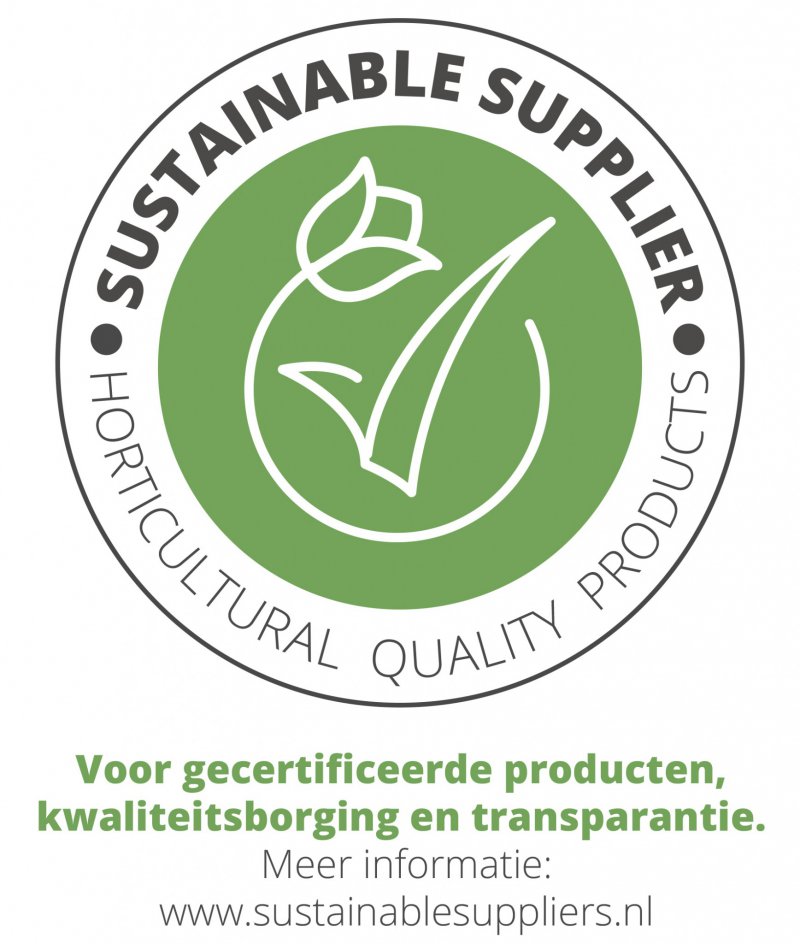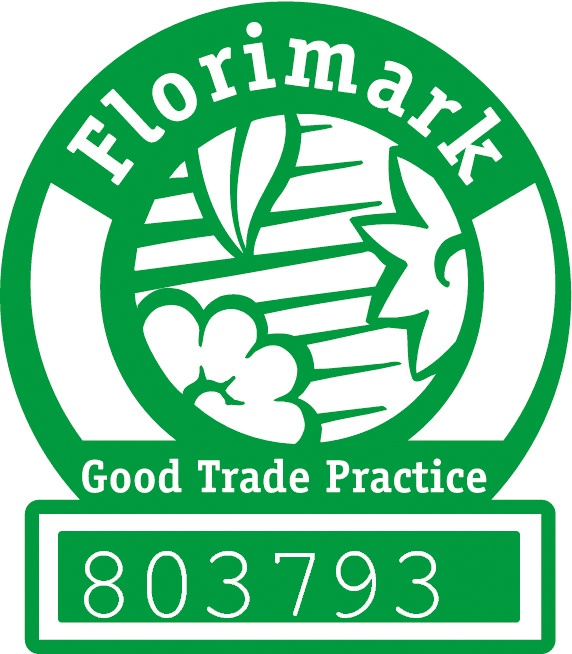How do we make sure the shelves of our retail clients are filled with a distinctive display of the most beautiful products that nature has to offer? It is all down to an interplay of many different factors. Let us explain them to you.
Product and concept development
We keep a close eye on consumer trends and developments in the sector and we draw on our broad retail expertise. Driven by our keen interest in innovation, this enables us to bring to life new products and concepts all the time. In addition, we are constantly creating eye-catching ways of presenting our products on the shelves and further increasing sales.
Read more about product development and concept development.
Process
In the autumn, tulips, narcissi (daffodils), hyacinths, crocuses and other bulbs feature on the shelves, and in the spring it’s the turn of dahlias. The processes for spring and summer-flowering bulbs are broadly the same, but they do not run synchronously.
Dahlias: Summer-flowering bulbs
Dahlias flower from July until the first frost. They are harvested in late autumn when the tubers are at their largest. We leave the tubers to dry before inspecting them and sorting them according to quality. We then store them in special climate-controlled rooms at a temperature of between 6 and 10 °C, with continuous quality checks. At the end of winter, we pack the tubers so that they can be in the shops for early spring. When the risk of night frost has passed, the dahlias can be planted in the ground.
Spring-flowering bulbs
While the process for summer-flowering bulbs runs from July until early spring of the next year, the process for tulips, narcissi, hyacinths, crocuses and other spring-flowering bulbs runs from April until autumnand is as follows:
